Forget the Orient Express, try this luxury train instead
Spain’s Al Andalus was how the English royal family travelled last century. Now it has been restored and is the perfect way to see the southern part of the country.
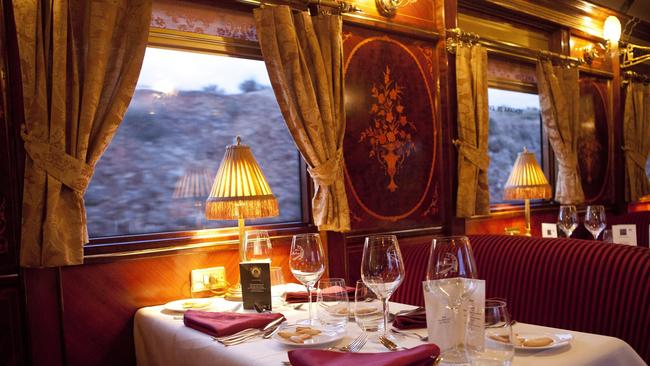
In the Spanish seaside town of Sanlucar de Barrameda, dazzling light bounces off the Guadalquivir estuary as from a crumpled sheet of foil. Seagulls trail colourful fishing boats and across these silvered straits lumbers a ferry carrying walkers destined for the sandy wilds of the UNESCO-listed Donana reserve.
We are a third of the way through our tour of southern Spain aboard one of the most exclusive tourist trains in the world — the Al Andalus — and quickly appreciating the best that this history-rich region has to offer.
Not for us the high-rise enclaves of Torremolinos or Marbella; instead, our train journey takes in unforgettably beautiful places: Seville, Cadiz, Jerez and Ronda, and, cream of the crop, Cordoba and Grenada.
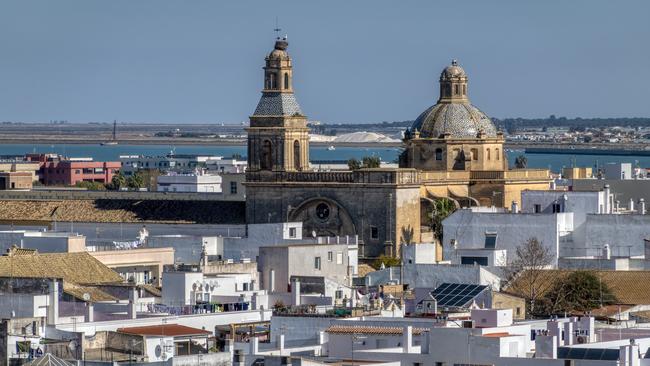
This is a week where pleasures build and not just from touring stunning cities or the delight of travelling on a beautifully restored 1930s luxury train, but equally from enjoying highly local experiences: sherry and olive oil tastings, flamenco and classical guitar, alongside an immersion into the history of bullfighting and the colourful world of the Moors.
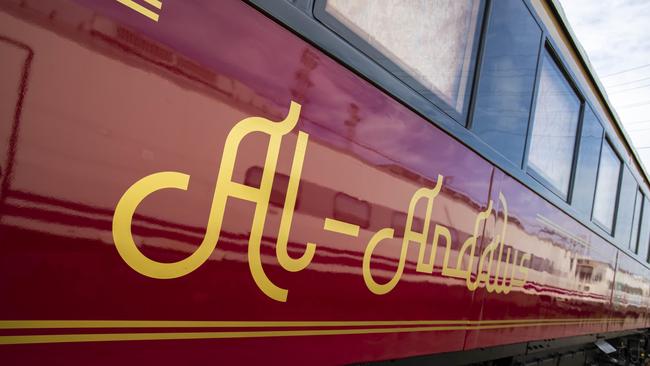
Gastronomy hallmarks each day; take now, in Casa Bigote, as waiters arrive bearing silver trays of prized king prawns, the langostino de Sanlucar (the town won Gastronomy Capital of Spain in 2022), and they’re delicious, steamed to sweet-flavoured perfection, flecked with salt crystals and served with a chilled glass of barrel-stored manzanilla.
Seville, where our journey begins, is unutterably enchanting; even lovelier without its habitual bludgeoning summer heat. During my first visit one springtime, orange blossom perfumed the air. Now, those trees bristle with tiny fruit. In the Jewish quarter’s cobbled lanes, bougainvillea and fragrant jasmine drape the facades of whitewashed houses.
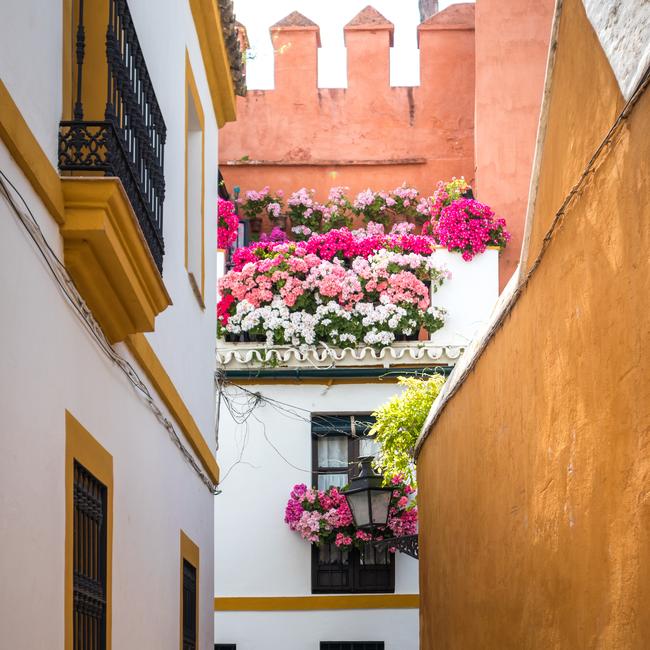
On our guided tour, we also admire the stuccoed front of Spain’s first tobacco factory, which at its peak employed 6000 women to roll cigars: “You know the aria?” asks Gaea, our guide, humming the theme from Carmen. “This is where it all began.”
Yet everywhere your gaze falls in Seville there is beauty to be found, particularly in the late-medieval gardens of the Royal Alcazar. Behind high walls, willowy palms bend to duck-filled pools. Myrtles mix with magnolia trees and our pleasant meander here before heading to the station provides a welcome tranquil pause.
There’s a palpable excitement when we first spot Al Andalus, doors swung open as smartly dressed staff descend to escort us onboard this luxury train. With 15 cars, it’s extraordinarily long (the longest train in Spain) and uses the same carriages that the English monarchy travelled on in the 1920s as they journeyed between Calais and the Cote d’Azur.
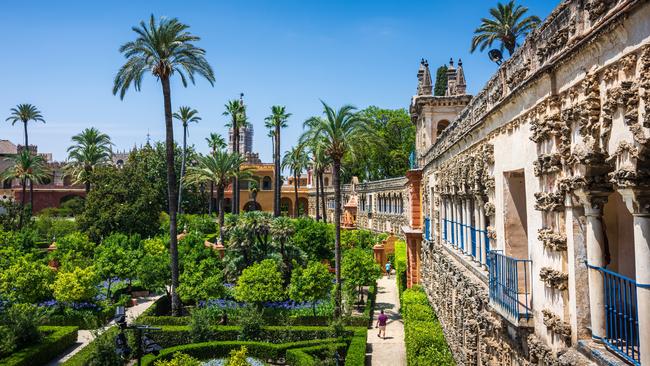
Outside, its handsome livery combines burgundy and cream; inside, you find seven sleeper cars, two restaurants and two saloon lounges with a piano bar – all railroad gems and beautifully restored to their original Art Deco charm. Floral-patterned marquetry and polished brass hallmark the decor, alongside retro sofas and armchairs, tasselled table lamps and linen-draped dining tables for two or four guests. Evenings on our train journey often feature entertainment: magicians one night, flamenco, another, and traditional Spanish music from a particularly skilled guitarist.
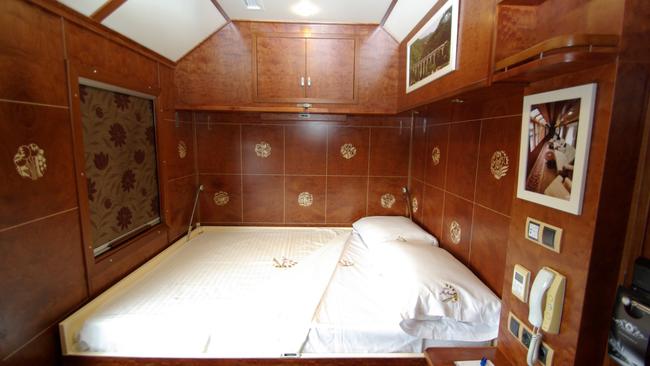
For accommodation, you can choose between a Grand Class compartment with two single beds that convert to armchairs, or a slightly larger Deluxe Suite with a roomy double bed. All have airconditioning, private bathrooms and a minibar of soft drinks.
So how does it compare to its rival, Belmond’s Venice Simplon-Orient-Express? Though pricey, Al Andalus is significantly better value and crucially, there are no shared toilets or showers. Onboard cuisine is less refined, but at least there’s no pressure to dress up. Because of the shorter distances, Al Andalus doesn’t travel at night, but you do get wonderful daily excursions.
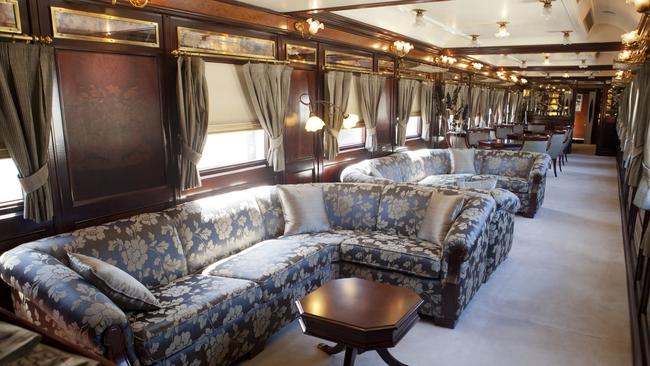
Normally, the train accommodates 64 guests, but we number 46: a mix of retired Spaniards, French, Swiss, Germans and Brits and one Australian. And after a period of shyness, the atmosphere onboard becomes highly sociable. At the farewell party everyone joins a hilarious wine-fuelled conga dance.
A typical day starts with breakfast, heralded by a ringing bell along the corridors, then guided tours followed by gourmet four-course lunches in top city restaurants. Free time follows, then dinner, which is served on the train.
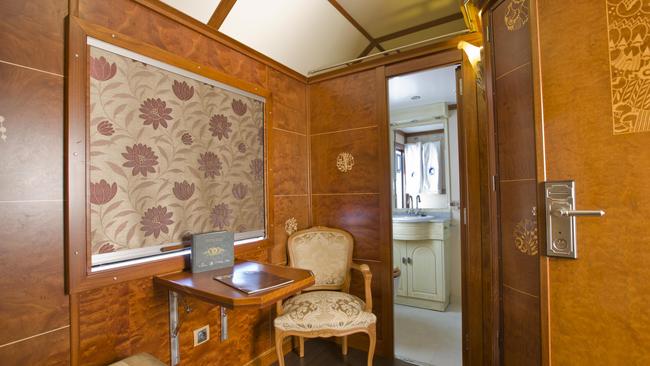
This being Spain, we rarely eat before 9pm and after a four-course lunch, sometimes featuring hearty stews of pork cheek or oxtail, an additional heavy meal often proves a dyspeptic step too far. I’m not alone in thinking a buffet-style tapas selection would be a better option.
You can always duck out of dinner as I do occasionally, preferring instead to absorb the passing landscape. Our trundle from Jerez de la Frontera to Ronda, a journey of 295km, uncovers ploughed fields and vineyards, surprisingly green after the hot summer, then vast empty plains with distant villages shining like tiny pinches of salt.
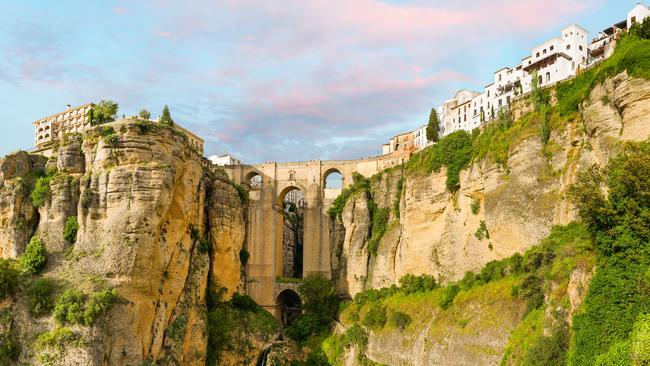
The sun sets, bathing golden light over white pueblos and palms as we pootle past Utrera, one of Spain’s historic cradles for both flamenco and bullfighting. This is our longest train ride, and more’s the pity as there is something exquisitely soothing about the chug and swagger of vintage carriages as dreamy landscapes whiz by.
My advice, if the train journey is as important as gastronomy and sightseeing, is to opt for a spring or early summer booking (Al Andalus operates from March to the end of June, then recommences September to the end of November), and in so doing, you avoid those early nights when the scenery quickly blurs to darkness.
In Jerez, we are stationary for two nights with a coach ferrying us to its historic centre one day, then Cadiz the next. Mind you, there’s lots to see in and around this section of Andalusia.
Here, I discover an unexpected liking for the toffee flavours of Oloroso sherry, sampled at the vast Gonzalez Byass bodega.
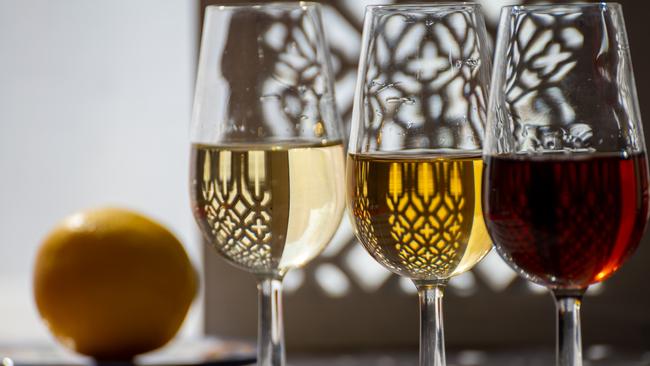
This 1000ha enclave, founded in 1835, resembles a small village. Narrow lanes trellised with vines lead to sheds – one, constructed by Gustave Eiffel of the Paris tower fame – where huge cherrywood and oak barrels crowd the interior. The air is perfumed with the heady aromas of old wood and alcohol, culled from the mix of Palomino Fino and Pedro Jimenez grapes used to create a subtly dry and highly quaffable Fino, through to golden caramelly Oloroso.
In fact, sherry often kickstarts restaurant lunches.
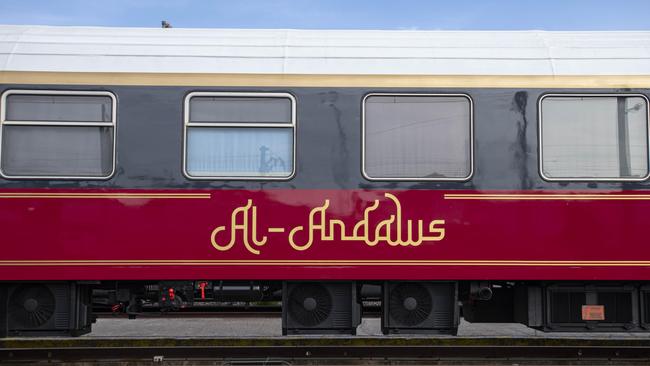
On the outskirts of an industrial estate just outside Cadiz, we enjoy easily the best meal of the week. At El Faro de El Puerto restaurant, flavoursome jamon Iberico and a tangy cold tomato soup precede a succulent fillet of grouper, resting on velvety herb-flecked orzo.
And what of the sightseeing? It is hard to pinpoint a favourite among so many memorable outings but Ronda’s ancient honey-toned beauty, perched either side of a 120m gorge, springs to mind. So too, windswept down-to-earth Cadiz, where our coach journey takes us past pine forests and marshland freckled with lagoons that once contained salt flats introduced by the Phoenicians.
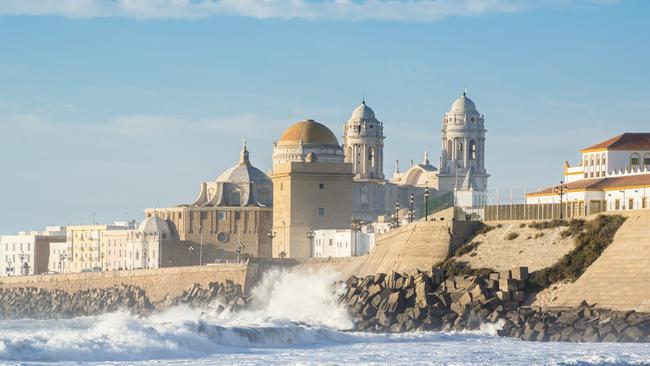
Fortified Cadiz with its maze of cobbled lanes flanked with tapas bars and balconied homes has an appealingly salty atmosphere. Sun dapples ochre-toned walls constructed from crushed oyster shells. The sea is ever-present, its wind-bashed waters having played a key role in Cadiz’s development, not just for Christopher Columbus’s expeditions, but equally in forming the homecoming port of the Spanish treasure fleet.
In contrast, Cordoba’s valley-set beauty – “It’s a real frying pan in summer,” says our guide, Isabella – centres on its wonderful Mezquita, an immense souk-surrounded mosque that dates back to 784AD.
In the Mezquita’s heyday, when the Moors dominated this part of Spain, it proudly stood as the world’s biggest mosque – its forest of polychrome double arches not only elegant, but practical as they were designed to withstand earthquakes. Now, however, it belongs to the Catholic Church, its core incongruously housing a Baroque cathedral.
“Imagine how it would have been,” urges Isabella. “Elaborate carpets for worshippers, and oil lamps perfuming the air.”
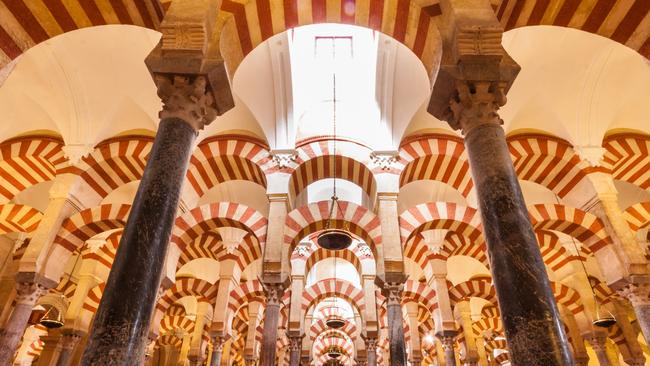
For Moorish purity however, nothing quite matches Granada’s Alhambra. It’s our penultimate day and after an evening train journey from Linares, we wake to navy-blue skies and a soft sun that dazzles over the sinuous stucco carvings and graceful fountain-filled alabaster patios of this gorgeous complex.
Not only is the Alhambra exquisitely beautiful (it inspired the design of the Taj Mahal), it’s admirably habitable. Patios and arched belvederes cooled the palace in summer; underfloor heating warmed those stunning bedrooms, and water was channelled from the Sierra Nevada.
Our guide Maria enlivens the tour with tales of blinded musicians playing in the harem’s sauna, adding that intrigue and jealousy was rife: apparently out of 32 concubines, only two died naturally.
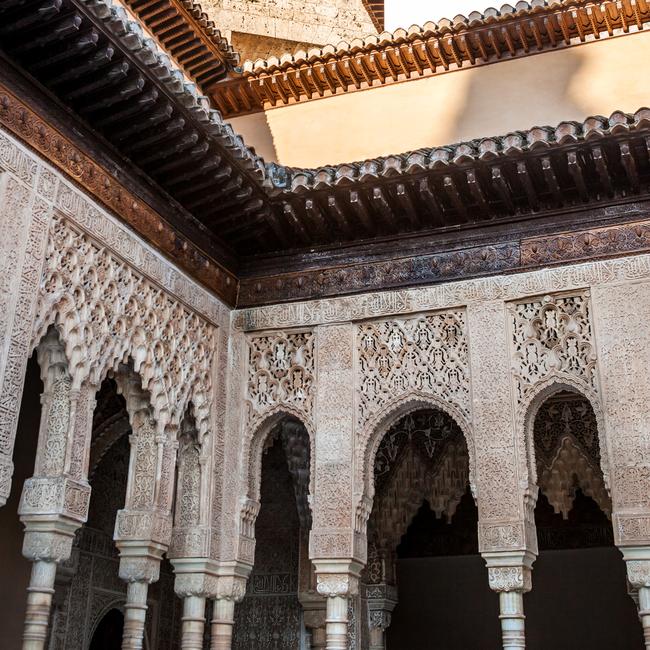
Even so, it’s easy to imagine the Sultan’s enjoyably indolent life: resting on cushions in darkened rooms as he greeted obsequious ambassadors; strolling through the Generalife summer gardens where myrtle hedges flank moss-green lily-filled pools, then listening to the soothing tinkle of fountains as sunlight dappled over carvings.
Erected between the 13th and 14th centuries for the Nasrid dynasty, the Alhambra is the last, and most dramatic expression of Muslim power in Europe.
It’s also the last and most dramatic visit of our culture-filled week. And although it’s hard to leave Spain, as a climax to our luxury train journey, I can think of no better place to end.
In the know
The six-night Tren Al Andalus runs from Seville to Malaga (coach transfer to Malaga from Granada) or Malaga to Seville.
For overnight stays in Seville prior to boarding Al Andalus, centrally located Palacio de Villapanes (a member of Small Luxury
Hotels of the World) is an exquisitely converted 18th-century palace with a traditional riad-style courtyard featuring a Baroque fountain. Its 50 guestrooms are elegant and understated, and the best have rooftop views over the old town towards Seville cathedral. Doubles from €252 ($410).
Louise Roddon was a guest of Renfe’s Tren Al Andalus and Hotel Palacio de Villapanes, Seville.


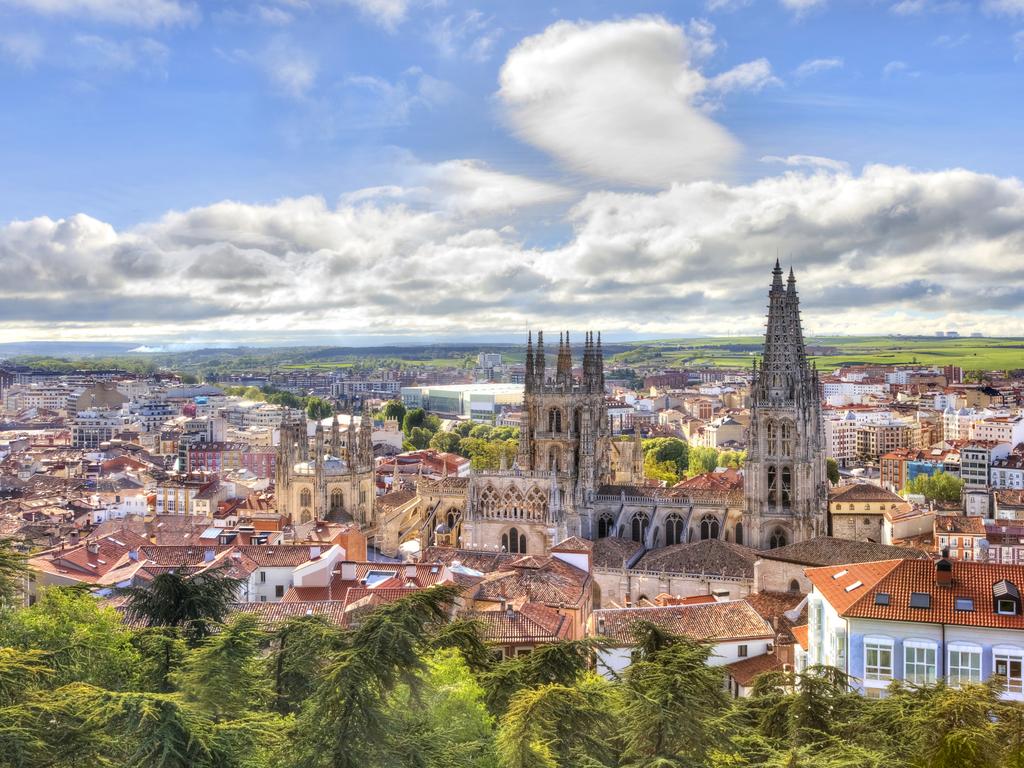
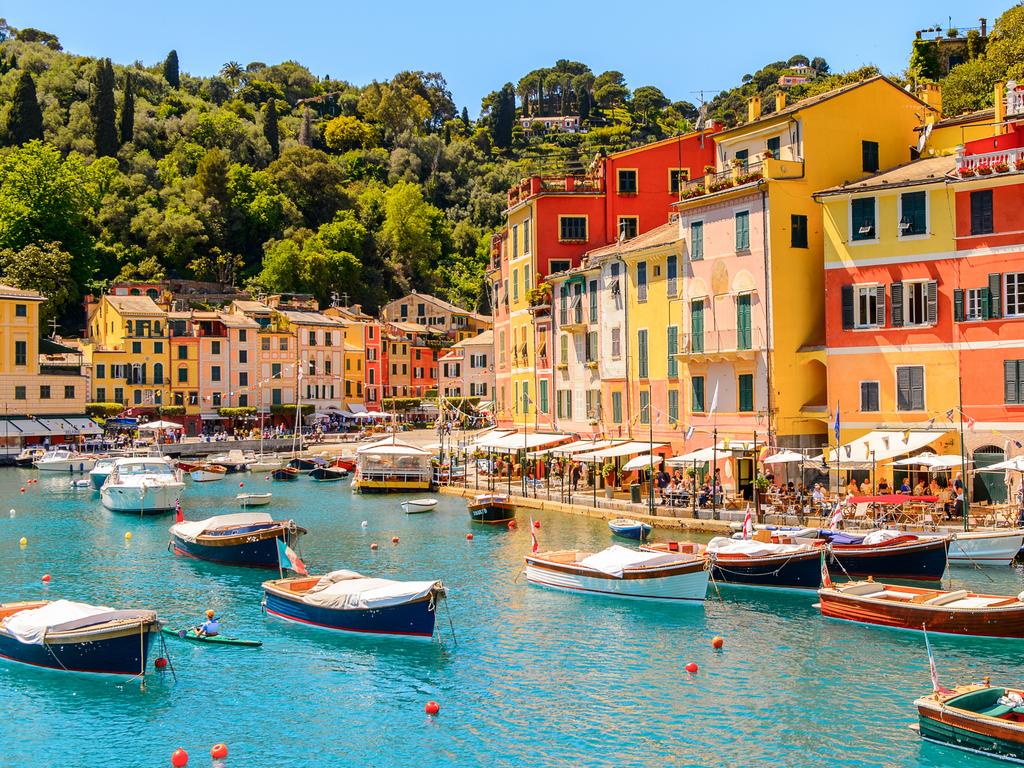
To join the conversation, please log in. Don't have an account? Register
Join the conversation, you are commenting as Logout